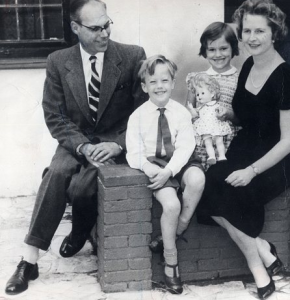With the release of “The Iron Lady,” the Financial Times recently published a wonderful story about how Maggie Thatcher agreed to totally remake her image…with only one exception.
In order to compete successfully as a politician, her handlers told her to get rid of her hats and fussy clothes. They told her soften her hairstyle. Maggie also had to learn to deepen her voice which her handlers said was “too high and had no authority.” They also told her to get rid of her pearls.
Maggie agreed to almost all the advice. Gone were the hats. The clothes were replaced by simpler, bolder outfits. A voice coach from the National Theatre was hired and she took to drinking tea with honey. And, her handbag which had become a sensitive symbol of the dressing downs she gave members of her Cabinet–and which the British press took to calling “handbagging”–disappeared.
But not the pearls. According to the Financial Times, Maggie told her friends “I don’t know why the bloody hell I shouldn’t wear these pearls. They were a present from Denis.” (Her husband, Denis, gave her the pearls in 1953 upon the birth of their twins.)
The Financial Times makes the point that the refusal demonstrates how Maggie kept a “firm grip” on her make-over. But, the choice of where she made her stand is interesting.
Pearls, of course, are major symbols in mythology and romance. The wonder and fascination of humankind with pearls is obvious in the origin myths associated with the gemstone. The ancients believed that pearls formed from hardened dew falling on the mollusk’s shell. The Chinese believed that the “mussel becomes pregnant by reason of thunder and the pearl grows by moonlight.” The Indians believed pearls were the result of celestial water drops.
The explicit connection between the divine and mankind as represented by the pearl was made by a number of otherwise very different civilizations. This, along with the pearl’s beauty and rarity, elevated the gemstone into what has been for centuries a coveted asset.
(Not everyone of course has treated their pearls as tenderly as Maggie. The heiress Barbara Hutton, for example, received a string of 53 pearls that had belonged to Marie Antoinette as a wedding present from her father. When a visiting friend asked to see the pearls, Hutton replied that she had fed them to her goose. Hutton explained she had heard that a pearl’s luster improves after being processed through the animal. This, however, is an exception to the treatment ordinarily accorded pearls.)
Maggie may or may not have been aware of the long, long history of pearls and their associations. But it’s clear that her pearls were important to her, important enough to defy the advice of handlers whose recommendations she otherwise accepted.
I’ve been able to find no information on Maggie’s necklace, but based solely on the history of pearls at that time, I’d suggest they are probably Mikimoto pearls.
Decades before 1953, the year Denis gave her the necklace, natural pearls had all but disappeared from the world market. Freshwater pearls, especially round freshwaters, weren’t even a factor.
The introduction of cultured pearls in the 1920s had caused a period of confusion and uncertainty as buyers and sellers wrestled with the question of whether the new, more abundant and less costly pearls were authentic. However, well before the 1950s that question had been resolved in favor of cultured pearls.
Despite the destruction of the Japanese cultured pearl industry in WWII, there are reports that the Japanese government allowed Mikimoto to amass a solid inventory of pearls. And, certainly Mikimoto, ever the showman, used the occupation to introduce American servicemen to pearls. I’ve heard stories, for example, about Mikimoto arranging to have high ranking officers “discover” pearls in oysters served during banquets he organized.
By the 1950s, pearl prices had declined, despite the fact that pearls were embraced by such celebrities as Grace Kelly. As one example, in 1917 Pierre Cartier used a two-strand pearl necklace to buy the six-story mansion housing the company on Fifth Avenue in New York. Its value in 1917 was $1 million, however, in 1957 the same necklace brought only $157,000 at auction. During the same period, Richard Burton bought LaPeregrina, the 500-year-old gem that had belonged to a succession of European royalty for $37,000, a pittance for a gemstone of its historic significance. The same gemstone set a record when sold in December, 2011 for $11.8 million.
By all accounts, Denis Thatcher was an astute, knowledgeable businessman. Although he spent the war in Europe, he was well traveled and by 1953 had already built the company he joined after the war into an international enterprise. Denis may have learned about cultured pearls during his travels although there is absolutely no evidence to suggest that either of the Thatchers were especially interested in gemstones.
But by the 1950s pearls had become a chic wardrobe accessory and were especially associated with a sort of quiet elegance. I believe this would have appealed to Denis who undoubtedly wanted to give his wife something significant to commemorate the birth of his children.
That she recognized the significance of the gesture is obvious in her refusal to part with them.
In any event, it’s a charming story and emblematic of the role pearls can play in the lives of women who own them.


